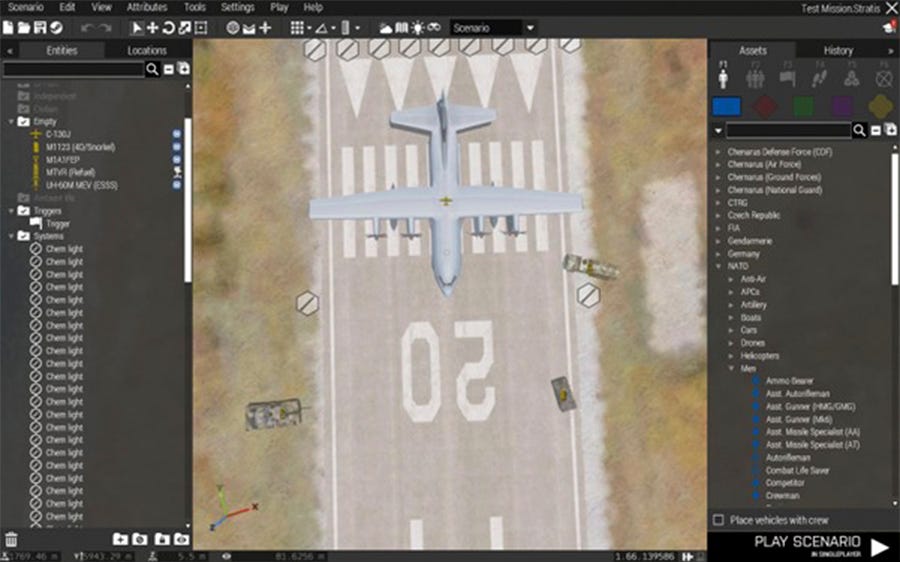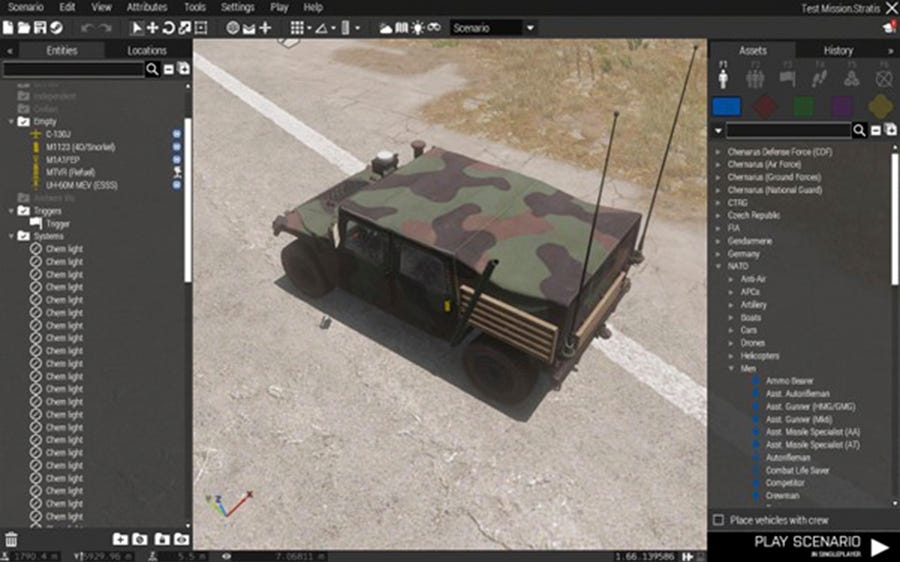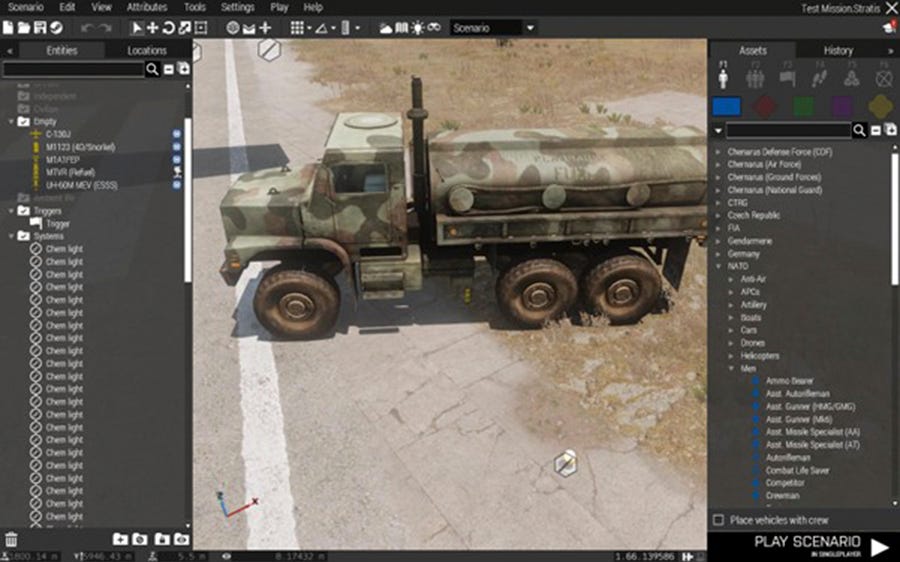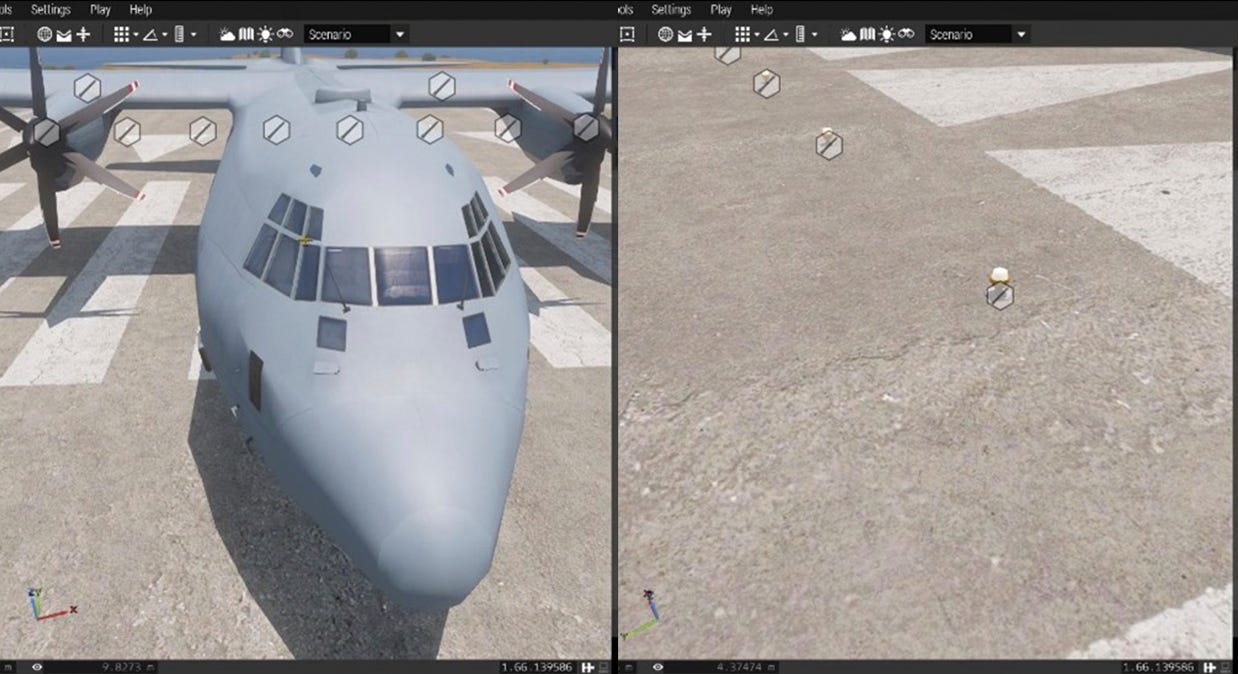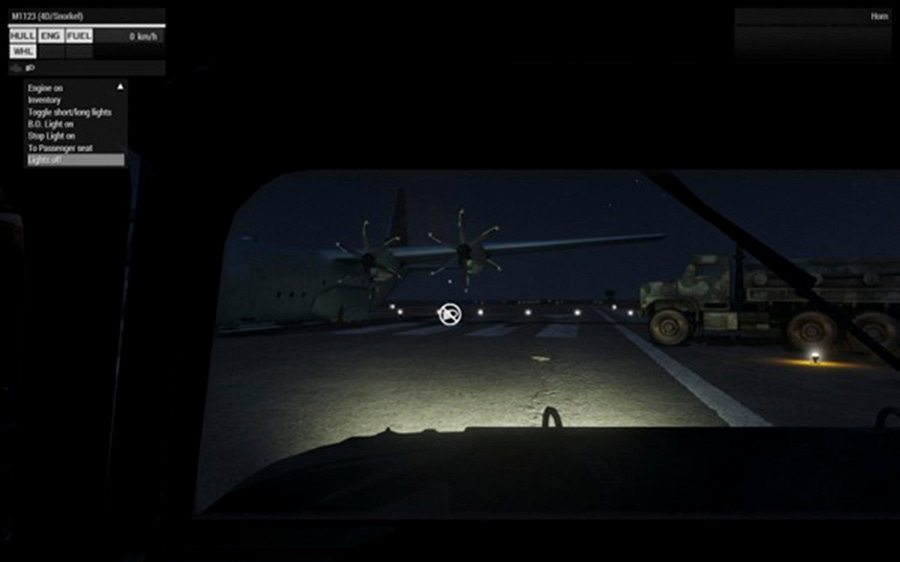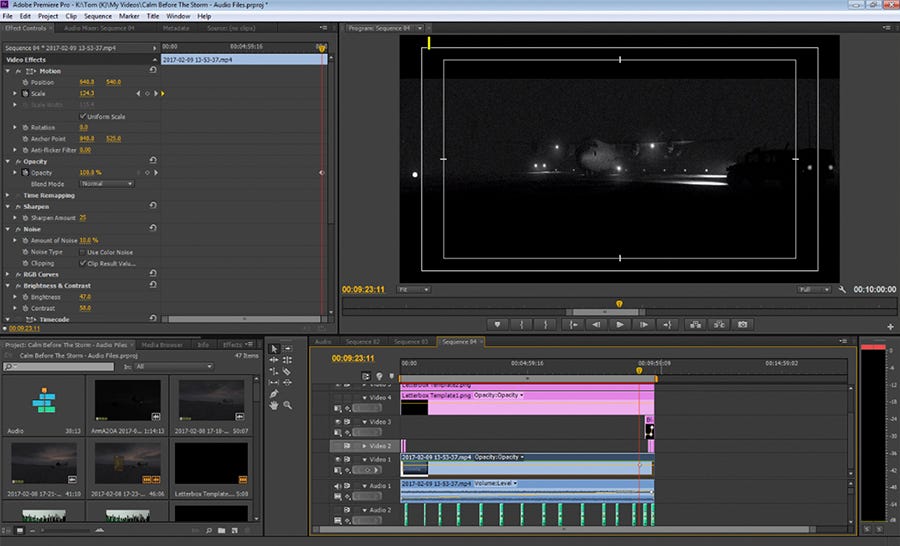Welcome back to A Journey into the Virtual World. In the previous post looked at a few more artists and inspirations for the project. If you missed that one, be sure to take a look back through the [VR]Ography section.
After getting the first half of the project mostly set, I returned to the virtual to set up my scene and to capture the required footage. For the right channel, I wanted to represent a means of a journey, specifically in reference to the Orpheus myth. In order to represent this with a modern framing, and utilising the ARMA engine, I decided to use a plane, it being an appropriate contemporary symbol to represent journeying to another place (world), or in this case a possible underworld, or hell (war). It is here that I referenced again the words of David Cotterrell.
“An hour-long flight in almost pitch blackness, but with the drone of the sound being so powerful that it made you feel unwell…” – David Cotterrell
In this quote he is speaking of the monotony of a long plane journey, one that is leading to a zone of conflict - this is what I wanted the journey to hell to pay homage to, and in utilising the military assets included within the ARMA engine, I was able to set up an appropriate scene. The combination of real, virtual, and a representation of a real act, I hoped, would come together to portray my intentions within the piece. As I was using a plane as the primary focus, I decided to use a landing strip from a military airport for the backdrop.
Simply dropping the aeroplane into the scene was not enough however - the scenario editor for ARMA 3 is incredibly versatile, and included a vast library of props, vehicles, foliage, textures, decals, buildings, and NPC’s, along with a raft of other features, and using this I was able to, in much the same way I did for my A Phoney War project, furnish the scene with additional details. This allowed for me to add a much needed sense of realism, as well as allowing me to convey a picture of waiting - placing additional vehicles and landing lights to further add to the atmosphere. The program is not without limitations however, and I had to run the simulated scene and manually drive the vehicles into the positions I wanted them, turning on their headlights and starting the engine of the plane to bring the scene to life.
The realism of the virtual world I wanted to portray within the second channel was key to tying the two disparate pieces of footage together, and the use of the ARMA 3 engine allowed me to accomplish this goal. The use of said engine and the attention to details regarding the lighting and placement of objects within the scene was vital to fully accomplishing a realistic image. That was not all however, as with any shot, the placement of the camera within the scene had to be carefully considered.
To establish a suitable camera position, I had to write a command into the engine to allow me to freely control the camera independent of the fixed point of view of the in-engine entities, and to accomplish this, I linked the command line to an in-engine button known as Radio Alpha. Once I had set this up with the command - Observer exec “camera.sqs”; showcinemaborder falce; I was then able to adjust the camera on the fly, which was just a more convoluted version of typing in /noclip...
I experimented with several viewpoints, but eventually settled within a vehicle just off the runway with another vehicle in the middle distance and the awaiting plane a little further off. With the placement set, I then adjusted the environmental effects, which within the engine can run at real time. I wanted the scene to shift with the passage of time, so I set the in-game time to twilight, allowing for the video to capture the coming darkness, giving the scene another layer of looming apprehension, inspired by Louise Bourgeois words on the transition between day and night.
“The threshold between day and night, conscious and unconscious, and the passage from one state to another.” - Louise Bourgeois
I also adjusted the weather, employing fog, heavy rain, and lightning. These, combined with the shifting light all came together to give weight to the scene.
In the next part I’ll be combining the captured footage into the two-channel piece before moving on to adding the audio tracks to bring the pieces fully together. If you want to read more on this project, check out the [VR]OGRAPHY section.
As always, thank you for reading. If you’d like to support the blog, you can do so by subscribing and sharing!
Also, a big thank you to the TYPEDBYTOM Patreon/BMAC supporter(s) this month:
Jamie B



